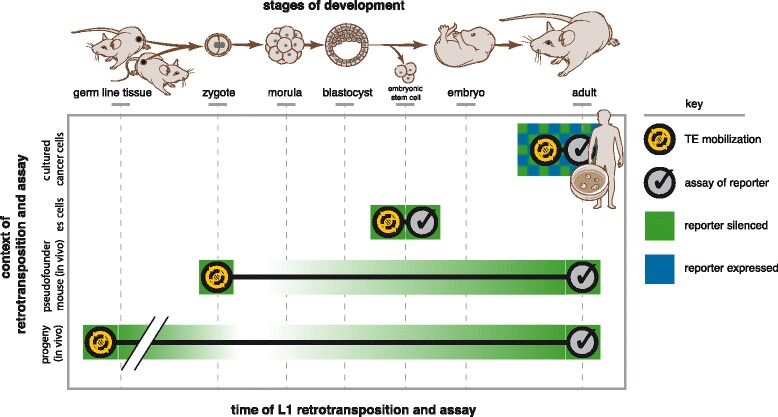Fig. 8.

A model depicting differential expression and silencing of new L1 insertions, reflecting the cellular and developmental contexts of L1 integration. In this model, we propose that when L1 elements inserted during early development, in ES cells or before transmission through the germ line, such new insertions are densely methylated and silenced at the time of integration and when assayed subsequently. By contrast, if L1 mobilization occurred in adult somatic tissues such as cultured cancer cell lines, such L1 integrants undergo histone deacetylation and variegation, without cytosine methylation. This model is consistent with established expression differences of de novo methyltransferases Dnmt3a and Dnmt3b: robust levels were observed early in development and in ES cells, while low levels were described in differentiated somatic cells [63]. Additional factors could account for differential epigenetic regulation of newly inserted sequences in various developmental contexts. Top: various developmental time points as indicated. Key: yellow circle: time point when retrotransposition occurred; black checkmark: time when expression and methylation status of new TE insertions were assayed; green: silenced reporter; white: erasure of methylation and silencing; green and blue checkerboard: variegated reporter expression
